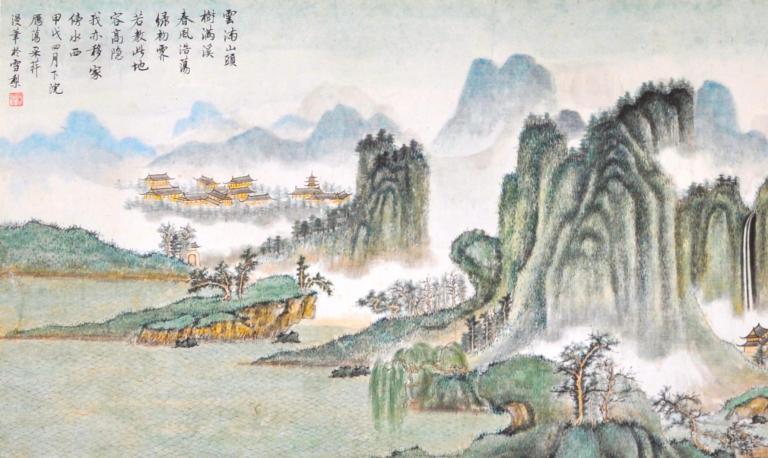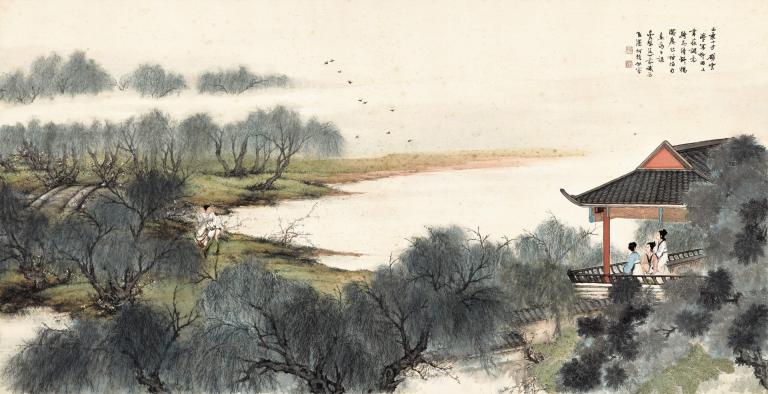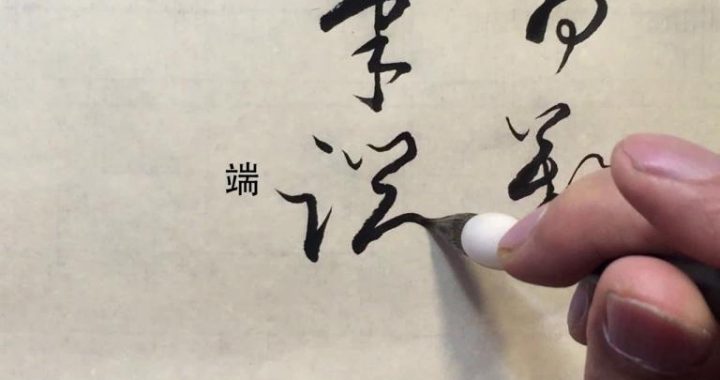Expressing Feelings through Mountains and Rivers
6 min readLandscape painting mainly depicts natural scenes. In the northern and Southern Dynasties, landscape painting began to rise mainly under the influence of landscape poetry and Zen Buddhism. Zong Bing375-443) in the Southern Dynasties wrote in Preface on Landscape Painting: a vertical line of three chi is equivalent to a thousand ren in height. a horizontal line of a few chi is equivalent to a hundred li in length This conclusion manifests Chinese landscape paintings characteristic of emphasis onartistic conceptions and, more importantly, its concept of unrestrained spirit Landscape painting became an independent type of painting in the Sui and tang dynasties, and maturated in the Five Dynasties and the Song Dynasty. Traditional Chinese landscape paintings are classified into green landscape paintings, golden landscape paintings, ink landscape paintings, light red landscape paintings, boneless landscape paintings, etc. according to painting methods and styles. The most representative types are green landscape paintings and ink landscape paintings The first landscape painting in the real sense existing in the world today is Spring Outing by Zhan Ziqian (545-618) in the Sui Dynasty, depicting an open and magnificent landscape: on both banks of a great rippling river are meandering mountains dotted with people on horse and boat on a spring outing in bright and pleasant spring sunshine. In terms of treatment of space, this painting’s focus of expression is the medium view, drawing the distant view and close-up view closer to the medium view and making the whole painting compact and coordinated. In terms of color use, the rich green color is used as the keynote of the whole painting. Suchrich green color is just a feature of natural scenery in spring. Zhan Ziqian ‘s green landscape paintings deeply enlightened and influenced Li Sixun(651-716) and his son Li Zhaodao(675-758) in the Tang Dynasty. At last, green landscape painting fully maturated under the writing brushes of li sixun and li zhaodao and became a unique painting style of Chinese landscape painting

Li Sixun was good at drawing mountains, rivers, buildings, pavilions, flowers, trees, birds, beasts, Buddhists and Taoists. He mainly studied landscape painting from ZhanZiqian and carried out improvement and innovation on this basis to form the style of golden landscape painting featuring meaningful artistic conceptions and elegant colors. In creation, Li Sixun not only depicted real scenes, beautiful and marvelous natural mountains and rivers and magnificent palaces, buildings and pavilions, but also introduced the theme of immortals creating an ideal state of mountains and rivers li Sixun was born in the royal family, and his works reflect the aristocratic class’s aesthetic tastes and life ideals. Influenced by Buddhism and the popular trend of scholars’ seclusion then he often revealed a sentiment of detachment from the world His Sails on a river and Buildings is now collected by the National Palace Museum inTaipei. It is thought to be the only existing part of a screen painting, depicting a agnificent river, courtyards full of green trees and leisurely people, organically combining nature and people, and manifesting the traditional cultural thought of unity of man and nature

Li Zhaodao,also good at landscape painting,changed his father’s style and carried out innovation.His vigorous stokes can depict the winding mountains and rivers as well as mist and clouds.His representative work is Emperor Minghuang’s Flight to Sichuan.It depicts the event of the flight of Emperor Xuanzong of the Tang Dynasty to Sichuan for avoidance of disasters brought by the an-Shi rebellion,but the painter portrayed it as an easy journey instead of manifesting the hard road to Sichuan and turbulent situation with unusual and rugged mountains and people driven to distraction so as to downplay the tragic nature of the story itself.This shows that
landscapes, and both the figure and story followed the theme of landscape the creation of this painting the painter’s main purpose was still depiction Among landscape paintings, green landscape paintings and ink landscape paintings are equally important. Ink landscape paintings are paintings created with ink depicting images with abundant changes in ink thickness and giving emphasis to artistic conceptions. Ink landscape painting originated in the tang Dynasty, became mature in the five Dynasties, peaked in the Song and Yuan dynasties, and developed further after the Ming and Qing dynasties. In terms of techniques, ink landscape painting is dominated by strokes and at the same time gives full play to the role of ink styles, emphasizing “ink as color”and”five ink colors”. The former means changes in ink thickness are changes in gradation of color; the latter means different colors can be replaced by multilayered ink tones
The founder of ink landscape painting was Wang Wei(701-761) in the Tang Dynasty. He wrote in Secrets of Landscape Painting: Among all paintings, ink paintings are the best. Nature is introduced into paintings naturally to achieve a state hardly attained by other types of painting. In terms of painting themes, Wang Wei’s ink landscape paintings are fresh and natural, quite different from Li Sixun’s and his son’s stately and solemn green landscape paintings. His paintings are mostly themed on wild nature full of life, depicting mountain villages lone ferries and river snow. In terms of painting techniques, his use of colors was unique, replacing malachite green and azurite blue used since Zhan Ziqian, Li Sixun and li Zhaodao with ink. In terms of expression techniques, he created methods such as light ink”and splashed ink”to manifest layers of changes in ink thickness and show nature’s charming quietness and abundant life
After Wang Wei, numerous painters emerged and carried forward ink landscape painting without cease. Dong Yuan(? -C 962) in the Five Dynasties was an important representative among them He used the “wrinkling method”and”moss dot method to manifest natural landscapes south of the lower reaches of the yangtze river Some strokes are quite disorderly, looking like nothing when viewed from a close distance but looking like real mountains and rivers with a sense of vividness and depth when viewed from a long distance. His representative works include The Xiao and Xiang Rivers, Summer Mountain, Waiting at a Ferry in the Summer, etc. These paintings vividly depict undulating hills, exuberant grass and trees and misty clouds south of the lower reaches of the Yangtze river in sharp contrast with the towering mountains in the north depicted by Jing Hao (c 850-? ) who lived in an earlier period. Besides, Dong Yuan attached great importance to depiction of figures in landscape paintings and even took it as the purpose of painting sometimes, fully demonstrating the view that man is the soul of the universe
In terms of landscape painting theory, searching everywhere for extraordinary peaks to draw up drafts”are Qing painter Shi Tao’s famous words. Shi Tao, with theoriginal surname of Zhu, was a descendent of the imperial clan of the ming Dynasty After the fall of the ming dynasty, he left home and became a monk with the religious name of Yuanji and the courtesy name of shi tao. His landscape paintings do not follow previous painters, seemingly following no rule but actually turning old rules into his own rules. the compositions are novel and the strokes are unrestrained full of surging passion and flourishing vitality. Apart from landscape paintings, many of his flower-bird paintings and figure paintings are vivid in spirit”. Shi Tao occupies a veryimportant place in China’s painting history. His painting practices and theories exerted important influence on later generations









